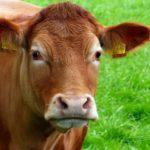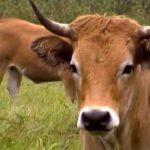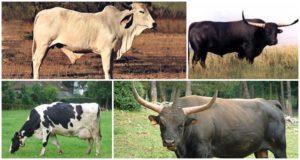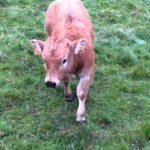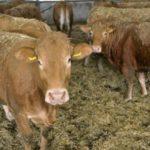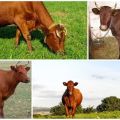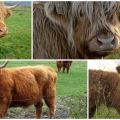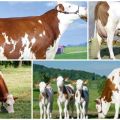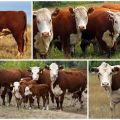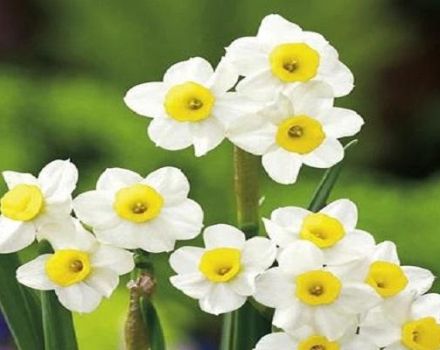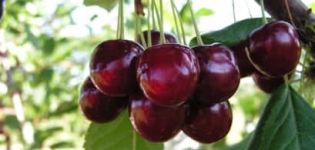Description and characteristics of obrak cows, rules for their maintenance
The Obrak breed of cows (from the French Aubrac - a monastery in France) was bred to obtain milk, meat, as well as a labor force in field work and as a pulling force. Today the breed has a meat value. Animals are resistant to changes in temperature and climate, they are good at assimilating different types of roughage, they are known for longevity and endurance, and their peculiar appearance will not be confused with another breed.
Anatomical characteristics and description of obrak cows
Obrak animals, as a rule, have a light brown color, light spots on the limbs and muzzle. The tail and nose are often dark. This cattle is very undemanding, it feels good in hard-to-reach areas. They have a hairline that allows you to tolerate strong temperature changes without complications. In the diet, a large amount of solid feed is allowed - the crayfish assimilate it well.
Anatomical characteristics - appropriate to the appearance. The body is strongly muscled, but compact. Bull inseminator - with a hump. The head is not very large, characterized by a concave profile. Torso: The loin and back are relatively wide, the back and front are well developed. The limbs are strong and well positioned. The height at the withers is 1.3 meters, the weight of a born bull is up to 50 kilograms, a cow is up to 750 kilograms, a bull is up to 1.1 tons. Slaughter age - from 16 to 20 months. High reproducibility and milkiness.
Advantages and disadvantages of the breed
With all its positive aspects, there is also a minus - aggressiveness, but only when there is a threat to your calf or yourself during pregnancy.
Maintenance, care and feeding
For obrak, a stall, stall-pasture or stall-walking system of maintenance is selected. It is optimal to withstand the temperature and humidity conditions in the room: when the temperature rises above 25 degrees, productivity drops significantly. In summer, daily walks are necessary, during which you need to ventilate the stalls - excess moisture and carbon dioxide will go away.
Milking cows require care in the form of cleaning the skin from dirt and parasites, this also increases the general tone of the body and improves appetite. Clean away from the food source. A scraper and brush are required, and if necessary, soap.
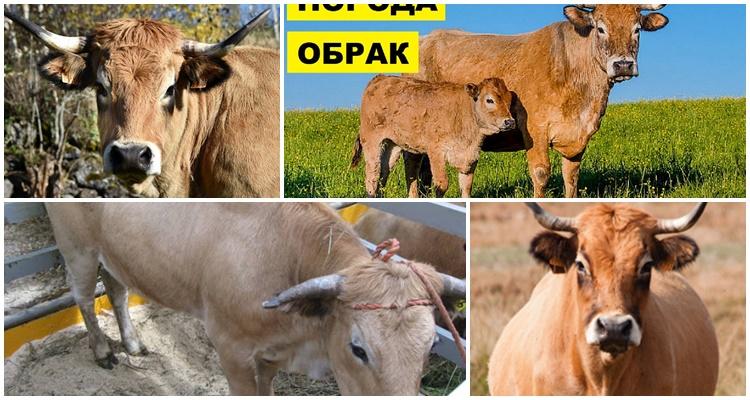
Feeding obraks is organized in the form of 2-3 meals a day. In view of the meat orientation of cattle, it is worth planning a balanced and most nutritious feeding: green grass, silage, vegetables and fruits, cereals and legumes, ripe root crops, concentrated feed (bran, compound feed), top dressing (salt and additives). In the spring, a serious vitamin deficiency is possible; prevention and elimination - vitamins in feed and injections.
Breeding features
Gobies 8 months old and cows 1 year old are best suited for breeding. Too late or early mating can lead to problems such as weak offspring, painful childbirth, and loss of milk.
It is important to pay attention to the physiological cycle of a cow, which consists of 4 stages:
- Heat: The cow shows readiness by secreting mucus.
- Excitement: attraction of a cow to a bull, which may result in refusal of food and mooing.
- Sexual heat: the genitals of the cow swell and turn red, which lasts up to 2 days, at which time the mating should be carried out immediately.
- Ovulation: starts after 10 hours.
The combination has no peculiarities. The methods are similar to those used for other breeds and types of cattle. Representatives of the Obrak breed, as a rule, do everything on their own, while the bulls do not mutilate the cows. To improve the breed, it is optimal to replace bulls in the herd once every 2-3 months.
They also practice artificial insemination of cows, which also helps to refresh the blood without critical material costs.
What are they sick with?
Diseases of obraz, like other cows, are non-infectious and infectious. Non-infectious causes only one cow death. Caused by poor care and inappropriate maintenance. Infectious diseases can destroy an entire herd. Certain diseases are transmitted to humans. These are cowpox, brucellosis, foot and mouth disease, rabies, leukemia, tuberculosis and actominosis. For any incomprehensible symptoms, consultation and examination by a veterinarian is necessary.
